The national flag of Tunisia is a powerful and historically rich symbol that reflects the nation's heritage, its Islamic identity, and its enduring aspirations. One of the oldest continuously used national flags in the world, its fundamental design dates back to 1831, long before Tunisia gained full independence, establishing its deep roots in the country's pre-colonial era. Designed by Al-Husayn II ibn Mahmud, the Bey of Tunis, the flag has witnessed centuries of change, from Ottoman influence to French protectorate, and ultimately, to a sovereign republic.
Design and Symbolism: A Timeless Emblem
The flag of Tunisia is predominantly red, featuring a prominent white disk in its center. Within this white disk, a red crescent moon, nearly encircling a red five-pointed star, is placed. Each element of this simple yet profound design carries significant meaning:
-
Red Background: The vibrant red field of the flag is arguably its most striking feature. This color holds multiple layers of symbolism for the Tunisian people. Historically, it is associated with the blood shed by martyrs who fought against invaders, particularly during the 1881 French conquest and earlier conflicts with the Ottoman Empire. Beyond its commemorative aspect, red also symbolizes the resistance against foreign dominance and the enduring strength and resilience of the Tunisian nation. Furthermore, red is a color traditionally linked with the Ottoman Empire, acknowledging Tunisia's historical ties to this powerful entity, under whose suzerainty Tunisia once operated. In a broader sense, it signifies the vitality and dynamism of the nation.
-
White Disk: Positioned centrally on the red background, the white disk provides a striking contrast and serves as the canvas for the iconic crescent and star. The white color universally represents peace, purity, and honesty – values deeply cherished by the Tunisian people. The disk itself is often interpreted as symbolizing the sun, representing the radiance of the nation, its bright future, and the enlightenment of its people. It signifies hope, clarity, and the peaceful aspirations of Tunisia.
-
Red Crescent Moon: Within the white disk, the red crescent moon is a powerful traditional Islamic symbol. The crescent, particularly a waxing moon (from an Arab observer's perspective), is often associated with good luck, prosperity, and the beginning of a new era. For Tunisia, a nation with a predominantly Muslim population, the crescent explicitly signifies Islam, representing its religious heritage and cultural identity. It also symbolizes the unity of all Muslims worldwide, connecting Tunisia to the broader Islamic Ummah. The red color of the crescent links it back to the sacrifices and courage symbolized by the red field, emphasizing that religious identity is intertwined with national struggle.
-
Red Five-Pointed Star: Nestled within the embrace of the crescent, the red five-pointed star is another profound Islamic symbol. Each of its five points is widely understood to represent one of the Five Pillars of Islam: Shahada (faith), Salat (prayer), Zakat (charity), Sawm (fasting during Ramadan), and Hajj (the annual pilgrimage to Mecca). The star, like the crescent, reinforces Tunisia's Islamic faith and its commitment to these foundational principles. Its red color again ties it to the national spirit of resistance and the blood of martyrs, indicating that faith and national struggle are inextricably linked.
Dimensions and Proportions:
The official dimensions of the Tunisian flag are defined by law. It has a width-to-length ratio of 2:3. The white disk is precisely centered, and its diameter is set in proportion to the flag's height, typically around one-third of the flag's length. The crescent and star are then proportioned within this disk to ensure visual harmony and clear recognition. The precise geometric construction of these elements is often detailed in official flag specifications to ensure consistency. The flag's design is such that all elements are perfectly balanced within the red field, creating a strong visual impact.
History and Evolution: A Legacy of Sovereignty
The history of the Tunisian flag is exceptionally long and fascinating, tracing its origins back to the Beylical era. Before 1831, various maritime flags were used, often featuring crescents and stars with different color combinations. However, the modern design was officially adopted as the naval ensign of the Kingdom of Tunis by Al-Husayn II ibn Mahmud on October 20, 1827, after the destruction of the Tunisian fleet in the Battle of Navarino. He sought a distinctive flag to differentiate the Tunisian fleet from others. This design was then formally adopted as the national flag in 1831.
What makes the Tunisian flag particularly remarkable is its longevity. It largely remained in use even during the period of the French protectorate (1881-1956), albeit sometimes alongside the French Tricolour in official settings. This continuity underscored the enduring sense of Tunisian national identity, even under foreign rule. When Tunisia gained full independence on March 20, 1956, and subsequently became a republic in 1957, the flag was officially re-adopted. Minor stylistic adjustments to the crescent and star were formally made in a law passed on July 3, 1999, which slightly refined the curves of the crescent to better enclose the star, but the core design, colors, and symbolism remained unchanged. This makes it one of the world's oldest continuously used national flags, alongside those of Denmark and Austria.
Regional Context and Cultural Ties:
Tunisia is a North African country, part of the Maghreb region, bordered by Algeria to the west, Libya to the southeast, and the Mediterranean Sea to the north and east. Its flag, with the prominent crescent and star, clearly aligns it with the broader Islamic world, particularly drawing parallels with the flag of Turkey due to shared Ottoman historical influences and Islamic symbolism. This places Tunisia within a distinct cultural and religious sphere that extends across North Africa, the Middle East, and beyond. While sharing symbols with other Muslim nations, the specific arrangement, colors, and the context of its adoption give the Tunisian flag its unique national character. It represents Tunisia's dual identity: deeply rooted in its Arab-Islamic heritage while also having a significant Mediterranean dimension.
Interesting Facts:
-
One of the Oldest: The Tunisian flag is often cited as one of the world's oldest continuously used national flags, with its core design dating back to 1831.
-
Beylical Origin: It was originally designed by a monarch, Al-Husayn II ibn Mahmud, the Bey of Tunis, for his fleet.
-
Symbolic Continuity: The flag's enduring presence throughout French colonial rule speaks to the strong and unbroken thread of Tunisian national identity.
-
Resemblance to Turkish Flag: Its resemblance to the Turkish flag is not coincidental, reflecting shared historical ties to the Ottoman Empire and common Islamic symbolism. However, Tunisia's flag features a white disc that is absent in the Turkish flag, and its crescent and star are red within the white disc, rather than white on red.
-
Five Pillars of Islam: The five points of the star explicitly represent the fundamental tenets of Islam, making its religious symbolism very direct.
-
Protected by Constitution: The flag's design and significance are enshrined in Tunisian law, underscoring its importance to the state.
Significance for the Inhabitants: A Banner of Identity, Faith, and Freedom
For the people of Tunisia, the national flag is an object of profound respect and national pride. It is a tangible representation of their sovereignty, their rich history, and their aspirations for a democratic and prosperous future.
The flag embodies the struggles and triumphs of generations of Tunisians. The red evokes the sacrifices of those who fought for freedom, while the white symbolizes the peace they aspire to and the purity of their intentions. The crescent and star are not merely abstract symbols; they are deeply ingrained in the cultural and religious fabric of Tunisian society. They connect every citizen to their Islamic faith and to the wider community of Muslim nations, fostering a sense of shared heritage and spiritual belonging.
During national celebrations, such as Independence Day (March 20th), Republic Day (July 25th), and other important events, the flag is proudly displayed across the country – on public buildings, private homes, and vehicles. It serves as a powerful unifying symbol, transcending regional and political divides, reminding all Tunisians of their common identity and destiny. Despite periods of political change and social transformation, the flag has remained a constant and revered emblem, representing the resilience, unity, and enduring spirit of the Tunisian nation. It is a beacon of hope and a testament to the country's unique blend of Islamic tradition and modern aspirations for freedom and justice.
In the demonstration images, full-size flags are shown with proportions of 2:3, and hand-held flags with proportions of 1:2.
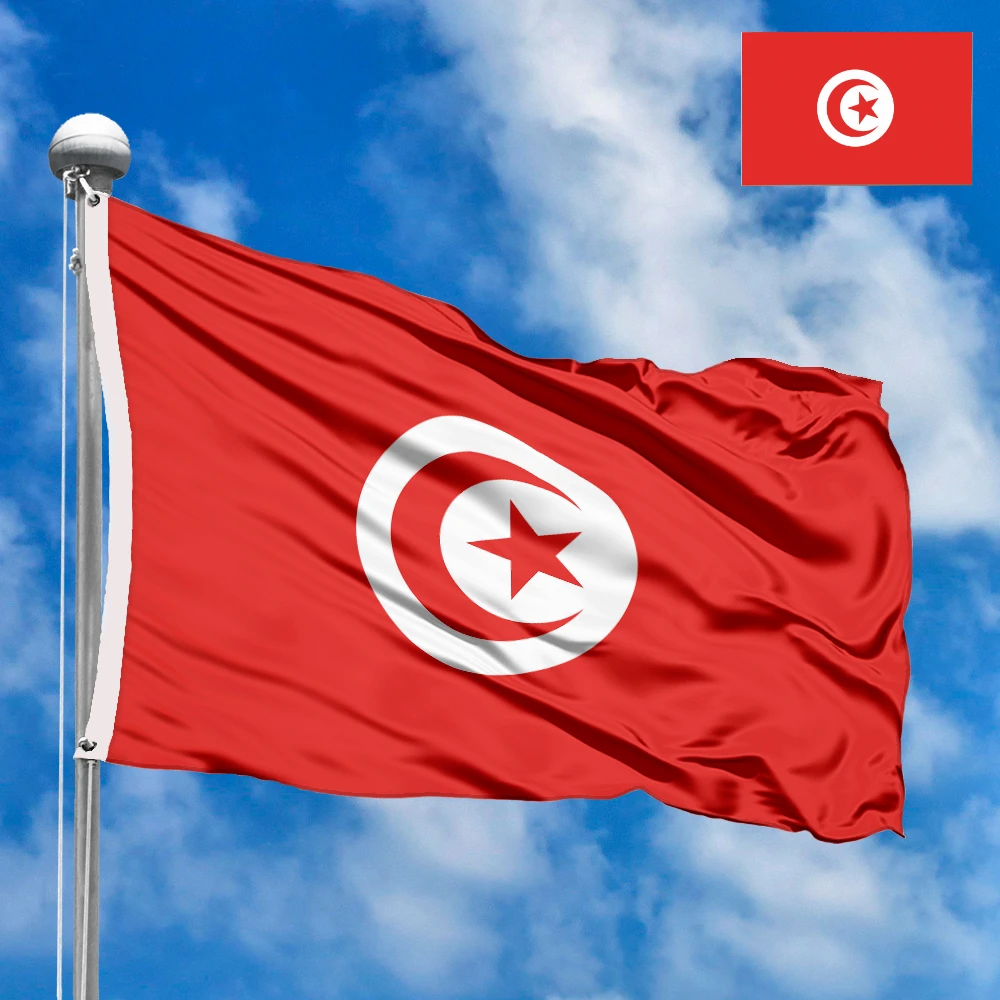

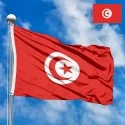
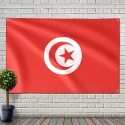
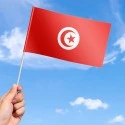
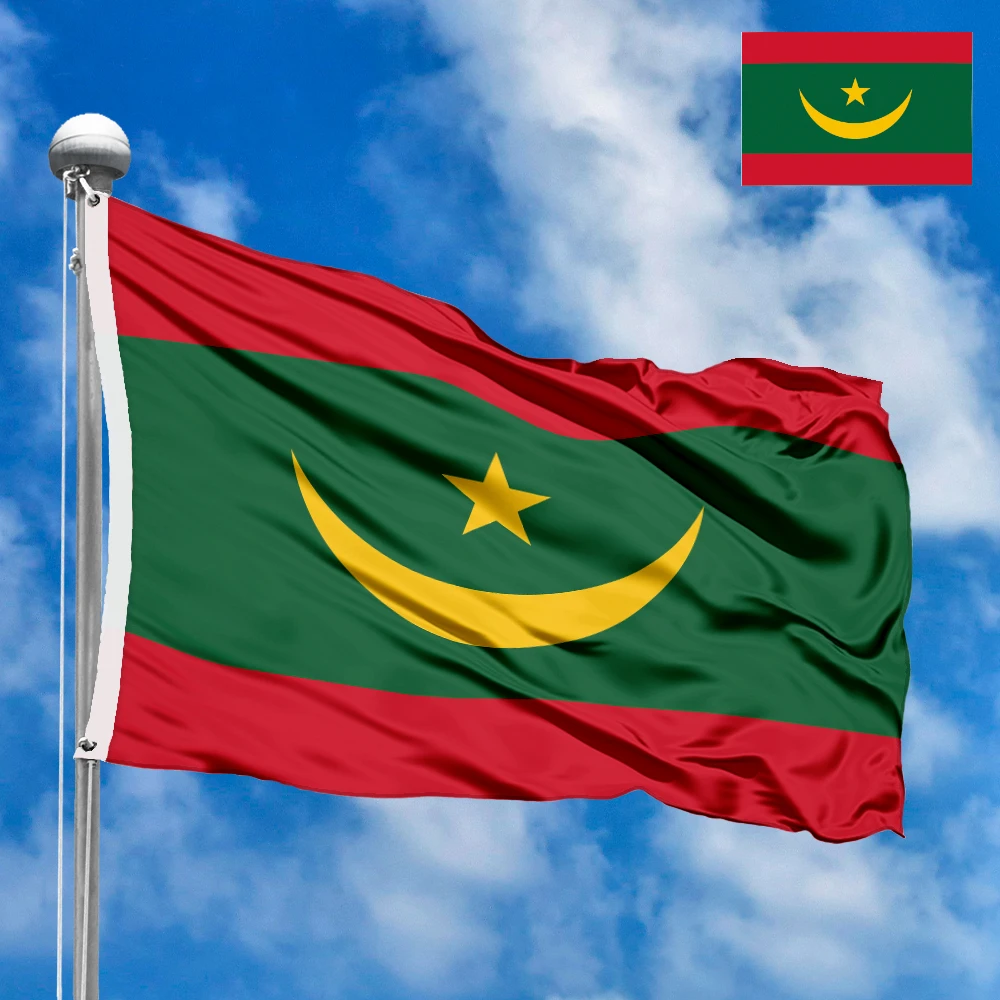

 Waving flag
Waving flag
 Sizes:
Sizes:
 Round flag
Round flag
 Sizes:
Sizes:
 Rectangular flag 2:3
Rectangular flag 2:3
 Sizes:
Sizes: